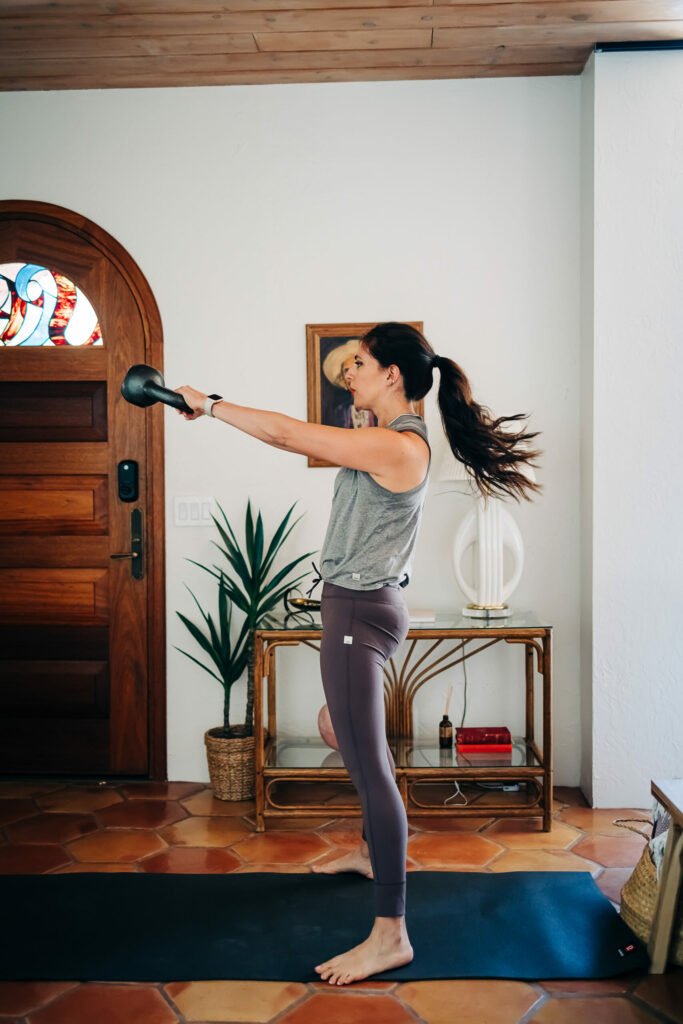Share my thoughts on aerobic exercise during the perimenopause.
Hi, friends! Are you OK? I hope your morning has a good start! How about the weekend? We went to my brother’s wedding and it was great and wonderful (I’ll share photos in my favorites on Friday!), just a low-key weekend. I caught up with some spring cleaning and enjoyed the beautiful weather outside.
For today’s post, I want to talk about cardio. I think there is a lot of aerobic noise now*.
“Stop doing aerobic exercise! Walk.”
“Aerobic exercise messes up your hormones!”
“Hey, it’s the devil!”
The reality is that cardio is good…for your heart health, you know…but You just need to have aerobic exercise type strategy for your own, your health journey, and how long you can do it. A big factor is perimenopause and changes over time.
Fast LIL refresh: Menopause is 8-10 years before menopause (you have no cycles for 12 consecutive months), and hormone levels begin to change. I don’t think I’m still there – I was 40 in November – but I know it’s around the corner, and many of my readers friends are in this top form.
During the fence, energy levels, recovery time, and how our bodies cope with changes in different types of movements are often noted. At this stage, strength training remains the most important form of exercise as it helps maintain lean muscle mass, supports bone density and maintains increased metabolism. However, aerobic exercise still plays a crucial role—it may need to look different from those in their 20s and 30s.
I think we can all remember that high-intensity aerobic hours are our lives. I would take multiple aerobic courses in a row or spend hours on Starclimber and support them with textbooks. My hormones are a mess, too. Thanks to the Lord these days is over.
During fencing, I think strategy is important. Focus on exercise that supports hormone balance, stress management, and longevity while controlling inflammation. I want to talk about the best aerobic strategies for integrating your daily activities into your daily strategies during this transition phase. *As always, talk to your doctor before making any fitness changes. **
The best aerobic strategy for menopause
1. Walking and Hiking: Gentle but Effective
Walking is one of the most underrated forms of aerobic exercise, and during perimenopause it is a gamechanger. It helps manage stress, supports cardiovascular health, and prevents cortisol (our stress hormone) from rising too high.
Goals with a goal of 8,000-10,000 steps per day. If this goal seems impossible, look at the baseline location and try adding 1,000 steps every few days until you reach the goal.
Try hiking or tilting walking to increase intensity while keeping its unity friendly.
Walking outdoors can also enhance mood and support circadian rhythm regulation, thereby improving sleep quality. This is a great way to support overall functionality and movement.
2. Interval push: short burst
While prolonged HIIT sessions may be less beneficial during perimenopause because of their effects on stress hormones, short and controlled intensity bursts may be a great way to enhance cardiovascular fitness without overtaking the system.
Try the following: add 30-60 seconds of speed or inclination during a walk or cycling session, then recover for 1-2 minutes, and repeat for 5-8 rounds.
Hills, stairs climb or cycling sprint are great choices.
Focus on quality rather than quantity – I do 2-3 sessions per week, the largest.
3. Zone 2 Aerobic exercise: Establish an endurance base
Area 2 Aerobic exercise is about maintaining a moderate level of effort and you can still have conversations but will feel a little challenge. This type of aerobic exercise helps improve metabolic flexibility, mitochondrial health and endurance – all essential during fencing. Check out all posts about Zone 2 aerobic exercise here.
Example: A brisk walk, easy bike ride, boating or brisk jogging.
Aim 2-3 times a week 45-60 minutes.
Keeping the intensity low can prevent too much stress while still providing heart health benefits.
4. Strength training circuit for aerobic burst
Because strength training is critical for perimenopause, combining it with short aerobic exercise can maximize efficiency and maintain engagement in exercises.
Work out with compound intensity exercises (squats, deadlifts, presses) and then 30 seconds of cardio (jump rope, rowing or upgrade).
This approach can increase heart rate while still prioritizing muscle building.

5. Dance or low-impact aerobic exercise
For those who don’t like traditional aerobic exercise, finding ways to feel fun is key. Dance exercises, rebounds (mini trampolines) or swimming are great choices for moving the body without too much stress on the joints.
Try dancing aerobic exercises for 20-30 minutes a few times a week. My favorite is the carving society! you can Use this link to try FreeEee.
The rebound is perfect for lymphatic drainage and combined friendly to aerobic exercise. Everything about rebounding here.
Swimming can soothe painful joints while still providing full-body exercise.
Create a balanced aerobic plan in the fence
A comprehensive approach ensures that you get the benefits of cardiovascular training without overloading your body.
Here is the schedule for the weekly sample:
Monday: Strength training + short push (e.g., tilt walking sprint)
Tuesday: Zone 2 aerobic exercise (45 minutes of brisk walking, cycling or jogging)
Wednesday: Strength Training + Low Impact Aerobics (Dance or Swimming)
Thursday: Rest or gentle walk
Friday: Strength Training + Short Aerobic Tour
Saturday: Hiking or longer zone 2 aerobic exercise
Sunday: Rest or leisurely exercise (yoga, stretch, walk)
So, tell me, my friend: What are your favorite ways to get cardio these days? How often do you combine cardio or walking exercises? I try to walk every day and my walking mat is the only way I can achieve my step goals.
XO
Gina
I like exercises you can try for free
success! Check out your email for a free 30-day meal and fitness cheat sheet
#aerobic #strategy #menopause
Source link
